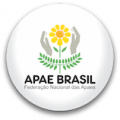Scientific discoveries also play a crucial role in addressing global challenges, such as food security. However, this has also led to concerns about environmental sustainability and the health impacts of chemical use. Ongoing research in agricultural science aims to develop sustainable farming practices that can feed a growing population while minimizing environmental impact. In the realm of psychology and social sciences, scientific discoveries Аркада казино зеркало на сегодня have transformed our understanding of human behavior and mental health. The development of evidence-based therapies, such as cognitive-behavioral therapy (CBT), has provided effective treatment options for various mental health conditions. Research into the biological and environmental factors that contribute to mental health disorders has also led to more targeted interventions and reduced stigma surrounding mental illness.
- Artists play a crucial role in this reclamation process by using their work to tell stories that challenge dominant narratives.
- However, it was during the Cambrian Explosion, approximately 541 million years ago, that life truly diversified.
- Public engagement and advocacy are crucial for holding leaders accountable and ensuring that policies reflect the needs and values of the communities they serve.
- Archaeological evidence suggests that activities such as running, wrestling, and hunting were not only essential for survival but also served as a means of social bonding and competition.
- The journey of understanding and integrating our childhood experiences is a vital step toward living a fulfilling and meaningful life.
- Juxtaposing the potential for positive change with the reality of environmental challenges underscores the need for a multifaceted approach to conservation.
This phenomenon, known as language endangerment, poses a significant threat to linguistic diversity worldwide. Efforts to revitalize endangered languages often involve community engagement and education, highlighting the importance of preserving linguistic heritage for future generations. Holographic language, a concept proposed by some linguists, suggests that language is not merely a collection of words and rules but a reflection of the human experience. As languages develop, they encapsulate the values, beliefs, and worldviews of their speakers, serving as a repository of cultural knowledge.
The lyrical quality of poetry has inspired countless songwriters, with many popular songs drawing on poetic techniques such as metaphor, imagery, and rhythm. Artists like Bob Dylan and Leonard Cohen have seamlessly blended poetry and music, creating works that resonate deeply with audiences and reflect the cultural zeitgeist of their times. Similarly, visual artists have often incorporated poetic themes into their work, using imagery and symbolism to convey complex emotions and ideas. Reinforcing the connection between poetry and other art forms, performance poetry has emerged as a dynamic and engaging way to present poetic works.
Conversely, individuals who feel disconnected from their cultural identity may struggle with feelings of alienation and a lack of purpose. Knowledge of the impact of technology on childhood experiences is increasingly relevant in today’s digital age. The way children interact with technology can shape their social skills, attention spans, and overall well-being. While technology can provide valuable resources and connections, it can also lead to challenges such as social isolation and decreased face-to-face interactions. As adults, individuals may find themselves navigating the complexities of technology’s role in their lives, often reflecting the patterns established during their childhood.
Преимущества для азартных игроков Arkada
Celebrated primarily in India and Nepal, Holi is characterized by the playful throwing of colored powders, singing, dancing, and festive foods. The festival encourages people to come together, regardless of caste or social status, promoting unity and joy. Holi symbolizes the spirit of renewal and the importance of letting go of past grievances, making it a time for forgiveness and celebration of life. Unraveling the essence of Kwanzaa, an African American holiday celebrated from December 26 to January 1, we see a celebration of African heritage and culture. Founded by Dr. Maulana Karenga in 1966, Kwanzaa emphasizes seven principles known as the Nguzo Saba, which include unity, self-determination, and collective work.
- In a world where authoritarianism and populism are on the rise, the preservation and promotion of democratic values are more critical than ever.
- Understanding this connection can provide valuable insights into personal development and emotional well-being.
- Book clubs, literary festivals, and online reading groups bring people together, fostering connections based on shared interests and experiences.
- Many languages are at risk of extinction as younger generations adopt dominant languages for economic and social reasons.
- This economic incentive can lead to a renewed commitment to maintaining and revitalizing folklore, ensuring its survival for future generations.
- Gratifyingly, the potential for meditation to enhance creativity and problem-solving skills is an exciting area of exploration.
Weather affects our mood in various ways, and research has shown that different weather conditions can elicit specific emotional responses. For instance, sunny days are often associated with feelings of happiness and positivity, while gloomy, rainy days can lead to feelings of sadness or lethargy. The impact of sunlight on serotonin levels, a neurotransmitter linked to mood regulation, is a prime example of how weather can influence our emotional well-being. Individuals suffering from SAD may experience symptoms of depression, including low energy, irritability, and difficulty concentrating.
The Quran, regarded as the literal word of God, serves as the primary text for Muslims, outlining the principles of faith, morality, and law. Hinduism, one of the oldest religions still practiced today, encompasses a diverse array of beliefs, rituals, and philosophies. Its roots can be traced back to the Indus Valley civilization, with the Vedas serving as foundational texts.
The study of celestial bodies, from planets to asteroids, provides invaluable data about the origins of our solar system and the fundamental laws of physics. Missions to Mars, for instance, have revealed clues about the planet’s past, including evidence of water, which raises questions about the potential for life beyond Earth. Understanding these cosmic phenomena not only satisfies our curiosity but also enhances our knowledge of Earth’s own geological and atmospheric processes. Moreover, the technological advancements spurred by space exploration have far-reaching implications for everyday life.
Advocating for policies that promote health equity and access to resources can help create environments that support a healthy lifestyle for everyone. By recognizing the broader context of health, individuals can contribute to systemic changes that benefit their communities. Engaging in hobbies such as painting, writing, or playing music can provide a sense of fulfillment and reduce stress. Creative activities stimulate the brain, enhance emotional well-being, and foster a sense of accomplishment.
Interestingly, the influence of weather on mood can also vary based on individual personality traits. Extroverted individuals may thrive in sunny, warm conditions, seeking out social interactions and outdoor activities. In contrast, introverted individuals might prefer the solitude that rainy days can provide, using the time to recharge and engage in solitary hobbies. This divergence in emotional response underscores the importance of understanding personal preferences when examining the relationship between weather and mood.
Лучшие игровые автоматы в казино Arkada
Research into the effects of urban heat islands on water resources is an emerging area of concern. Urban areas often experience higher temperatures due to the concentration of buildings and infrastructure, which can increase water demand and exacerbate evaporation rates. Implementing strategies to mitigate urban heat, such as increasing green spaces and using reflective materials, can help reduce water stress in cities. By addressing the urban heat island effect, we can promote more sustainable water management practices and improve overall urban resilience.
- Social media has played a significant role in sharing these experiences, allowing people to connect and inspire one another.
- By analyzing existing materials and their structures, AI can predict how modifications will affect performance.
- Understanding these physiological responses to color can help individuals and organizations create environments that enhance productivity and well-being.
- By embracing the importance of physical activity, we can unlock our full potential and lead lives that are not only healthier but also richer and more fulfilling.
- As the 17th and 18th centuries unfolded, the concept of travel evolved further with the rise of the Grand Tour.
Fascism gained traction in Italy under Benito Mussolini, while Adolf Hitler’s rise to power in Germany signaled a return to militarism and expansionism. The failure of the League of Nations to address these issues further exacerbated the situation, leading to a sense of inevitability regarding another global conflict. The war quickly expanded as Germany formed alliances with Italy and Japan, creating the Axis powers.
With the rise of technology, artists can now create immersive experiences that engage multiple senses. Virtual reality, for instance, allows individuals to step into a digital world where they can explore emotions in a unique and interactive way. This innovative approach to art challenges traditional notions of creativity and opens up new avenues for emotional exploration. As technology continues to evolve, so too will the ways in which we express and experience emotions through art. In addition to the various forms of art, the role of the audience in interpreting and experiencing emotions cannot be overlooked.
Throughout history, poets have used their craft to comment on the social and political issues of their time. Their poetry not only captured the essence of the African American experience but also contributed to a broader cultural awakening, influencing art, music, and literature. Poets like Adrienne Rich and Audre Lorde used their voices to confront societal injustices, encouraging readers to question the status quo and strive for a more equitable world. In this way, poetry becomes a catalyst for cultural transformation, urging individuals to reflect on their beliefs and take action. In addition to its role in social movements, poetry also plays a crucial part in shaping personal identity.
Writers like Langston Hughes and Zora Neale Hurston used their works to address issues of race, identity, and social justice, leaving a lasting impact on American literature. Meanwhile, the Surrealist movement, led by figures such as André Breton, sought to explore the unconscious mind and the realm of dreams, challenging the boundaries of reality and imagination. As the century progressed, literature continued to evolve in response to global events, including the World Wars and the rise of technology.
Challenging our understanding of ancient civilizations further, the concept of “cultural diffusion” plays a crucial role in unraveling the mysteries of human history. The exchange of ideas, technologies, and practices between different cultures has shaped the development of civilizations throughout time. For example, the spread of agricultural techniques from the Fertile Crescent to Europe and Asia transformed societies and led to the rise of complex civilizations.
Similarly, sustainable agricultural practices that minimize water use can enhance food security and protect ecosystems. Quality engagement with local communities is essential for fostering a sense of ownership and responsibility towards water resources. Community-based water management initiatives can empower individuals to take an active role in protecting their water sources. By involving local stakeholders in decision-making processes, we can ensure that water management strategies are culturally appropriate and responsive to the unique needs of each community. As we confront the realities of climate change, population growth, and increasing demand for water, it is imperative that we act decisively to protect this vital resource. As we learn more about the complexities of water systems and the challenges they face, we can adapt our strategies and approaches to ensure their sustainability.
By valuing and preserving folklore, societies can safeguard their cultural heritage and promote a more sustainable future. In addition to its educational and social functions, folklore also plays a significant role in the arts. Literature, music, dance, and visual arts often draw inspiration from folklore, enriching the cultural landscape of a nation.
- This sense of wonder is essential for motivating individuals to engage with science and exploration, encouraging a lifelong pursuit of knowledge and discovery.
- This localized approach to media can help bridge the gap between citizens and their government, ensuring that the concerns of the community are heard and addressed.
- When individuals engage in critical thought, they are more likely to consider the consequences of their actions and weigh the pros and cons of different options.
- From the invention of the wheel to the rise of artificial intelligence, the evolution of technology has been a remarkable journey that has transformed human existence in profound ways.
- By taking a few moments to close your eyes and visualize a serene environment, such as a beach or a forest, you can transport your mind away from stressors and promote relaxation.
Zooming in on the cultural influences, we find that societal norms and values play a significant role in shaping our perceptions of beauty. For instance, in Western cultures, thinness has often been equated with beauty, leading to a myriad of psychological implications for individuals who do not conform to this ideal. Conversely, in some African cultures, fuller body types are celebrated as symbols of wealth and fertility. These cultural standards not only affect individual self-esteem but also influence interpersonal relationships and societal dynamics. The psychology of beauty is thus deeply intertwined with cultural narratives, making it a complex and multifaceted subject. Zealously, researchers have sought to understand the biological underpinnings of beauty perception.
Art can serve as a unifying force, bringing together individuals from diverse backgrounds who share a common goal. Community murals, for instance, often depict local histories and struggles, fostering a sense of pride and belonging among residents. Revolutionary art movements have emerged in response to specific social issues, often becoming synonymous with the struggles they represent. The Harlem Renaissance, for example, was a cultural movement that celebrated African American identity and creativity during the early 20th century. Artists, writers, and musicians used their talents to challenge racial stereotypes and assert their rights as citizens.
The use of sacred symbols not only enhances the religious experience but also fosters a sense of identity and continuity among believers. Vocal expressions of faith, such as prayer and chanting, play a crucial role in many religious traditions. These practices serve as a means of communication with the divine, allowing individuals to express their hopes, fears, and gratitude. In Christianity, communal prayers during worship services foster a sense of unity and collective purpose. These vocal expressions of faith not only deepen the spiritual experience but also reinforce the communal bonds among adherents.





